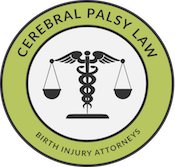Verdicts & Settlements: Mismanagement of High-Risk Pregnancies
A wide range of complications, risk factors, maternal conditions, and other factors may constitute a pregnancy as high-risk. It’s crucial for medical professionals to carefully and accurately diagnose, treat, and manage these pregnancies—the failure to do so is negligence, and when any negligent act results in an injury, it is medical malpractice. In this section, the birth injury lawyers at Michigan Cerebral Palsy Attorneys will share examples of past settlements and verdicts regarding the mismanagement of high-risk pregnancies. If you know a child or mother who was injured due to a medical professional improperly handling a high-risk pregnancy, we encourage you to reach out to our lawyers toll-free at (888) 592-1857 or through our online contact form.
1. Child Wins $3.85 Million
Failure to Diagnose and Treat Intrauterine Growth Restriction (IUGR) Leads to Hypoxic Ischemic Encephalopathy and Fetal Distress with Resultant Cerebral Palsy and Developmental Delays
In this case, medical professionals failed to properly address, manage, and treat a very high-risk pregnancy. During her pregnancy, the mother had seizures, a brain abscess requiring surgery, and sickle cell disease (SCD), which is a risk factor for low birth weight. Just after 36 weeks of gestation, medical professionals performed a Doppler ultrasound that signified Intrauterine Growth Restriction (IUGR) and diminished placental blood flow. The physicians failed to properly address and act on this—they didn’t mention their findings to the mother and didn’t warn her that babies with IUGR should be delivered between 34 and 37 weeks of gestation. The baby wasn’t delivered until 37 weeks of gestation when the mother went to the hospital for complications related to SCD. Approaching labor and delivery, the baby also exhibited non-reassuring fetal heart tracings, signifying he was suffering oxygen deprivation, but the physicians failed to act on this and he was delivered five hours after fetal heart tracings became abnormal. The baby was born 1,000 grams below the estimated birth weight, weighing less than the 1st percentile of babies, and was ultimately left with hypoxic ischemic encephalopathy (HIE), brain damage, spastic quadriplegic cerebral palsy, and severe developmental delays.
2. Child Wins $3.5 Million
Failure to Manage High-Risk Pregnancy (Mother Prone to Preterm Delivery) and Avoid Vaginal Delivery of a Breech Baby Leads to Neonatal Brain Damage and Disabilities
To read about this case, visit this page.
3. Child Wins $2.75 Million
Failure to Manage High-Risk Pregnancy, Failure to Diagnose Intrauterine Growth Restriction (IUGR) and Failure to Deliver on Time Cause Neonatal Brain Injury
This case involved a 39-year-old mother with a history of chronic hypertension, a past growth restricted baby, a past preterm induction due to preeclampsia, and other characteristics of a high-risk pregnancy. Medical professionals failed to properly monitor for IUGR through non-stress testing, ultrasonic testing and fundal measurements, thereby missing signs of IUGR. Medical professionals failed to organize a plan to monitor the mother’s high risk pregnancy during the first prenatal visit, and the mother was not advised of her risk for having a growth restricted baby. At her 33 week appointment, the mother had high blood pressure and fundal measurements indicating a small baby and/or decreased amniotic fluid. The next day, non-reassuring fetal heart tracings presented and an ultrasound indicated IUGR and oligohydramnios, so doctors ordered an emergency C-section. The baby was born with white matter brain damage and intraventricular hemorrhages from hypoxia, ischemia and metabolic acidosis. Now the baby has developmental disabilities, cognitive impairments, learning disabilities and seizures.
